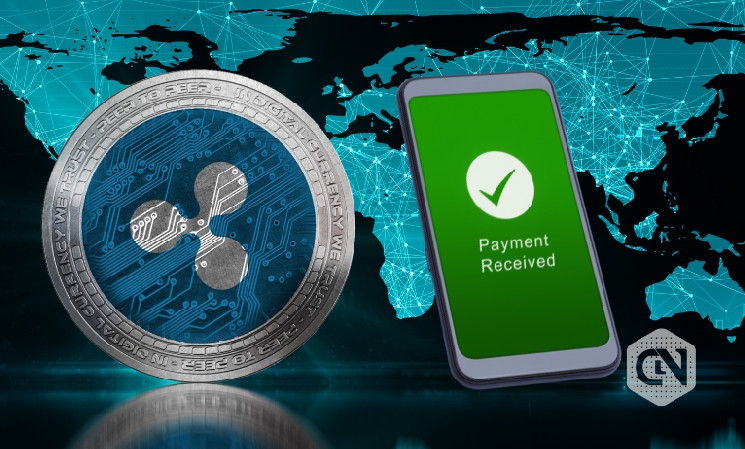Cross-border payments facilitate global commerce, linking businesses and individuals worldwide. However, traditional international money transfers using slow correspondent banking networks can take days to settle. This gridlock sparked fintech innovations like Ripple, aiming to optimize global transactions. Ripple utilizes blockchain technology and its native XRP cryptocurrency to enable near-instant settlement finality for international payments and remittances at a fraction of the fees. This article will analyze RippleNet’s speed in executing cross-border transfers and how that bridges a monumental gap in legacy payment infrastructure at scale across currencies. The dramatic velocity improvements hold profound implications for connecting global finance more efficiently.
How Ripple Aims to Solve the Problem?
RippleNet is a decentralized global network connecting banks, payment providers, and digital asset exchanges worldwide. It utilizes blockchain technology to provide real-time settlement of cross-border transactions between network participants in seconds, compared to days taken via conventional correspondent banking. All accounts on RippleNet leverage the XRP cryptocurrency as a neutral bridge asset to conduct currency trades and fund transfers while minimizing liquidity costs and opening up additional currency corridors.
RippleNet leverages consensus mechanisms to finalize payments without a central counterparty while all activity remains visible through a shared, immutable ledger promoting transparency. Advanced encryption secures network communications and transaction data. These features allow RippleNet to deliver blazing fast, reliable and transparent settlement of global payments at scale. RippleNet leverages XRP as a bridge currency to facilitate fast cross-border transactions between different fiat currencies and assets. Instead of relying on multiple regional intermediaries to perform sequential currency exchange transactions, XRP acts as a neutral intermediary between currencies like USD, EUR, JPY, etc.
This allows direct currency trades in seconds rather than days. Using XRP as the real-time bridge asset dramatically lowers processing times and costs compared to traditional correspondent banking networks, which charge higher fees per intermediary. XRP exists natively on RippleNet, allowing instant, point-to-point currency conversions by market makers worldwide. Eliminating lengthy settlement lag and overhead via XRP removes significant friction and barriers plaguing international payments through conventional, fragmented infrastructure.
Impact of Ripple’s Speed on International Transfers
RippleNet’s real-time settlement capability allows businesses to access funds from cross-border sales and transactions within seconds instead of waiting days. This significantly improves cash flow flexibility to capitalize on opportunities faster. Individuals transferring money across borders to family and friends using RippleNet gain instant access to funds critically important for personal finance needs instead of delayed settlement creating hardship.
Ripple’s technology, specifically the RippleNet platform and its native token XRP, is impacting various sectors by improving international payments in different ways. In the Global e-commerce sector, where some of the popular players like MoneyGram, SBI Remit, and Euronet Worldwide are leveraging RippleNet for faster and cheaper settlements. RippleNet is integrated with leading money transfer services and online platforms, including emerging Ripple casino sites dealing with multi-currency payments. Settlement times reduced from days to seconds allow faster revenue realization, lower costs, and leaner capital needs, benefitting trade at scale.
The benefits of RippleNet extend far beyond specific industries. Supply chain management gains from real-time tracking and tracing of goods, improving transparency and efficiency. Even corporate treasuries benefit from faster and cheaper international payments, streamlining financial operations. Automated reconciliation also reduces manual errors. These efficiencies are passed to end-users via lower fees and better exchange rates, yielding savings. Ripple’s innovative technology is demonstrably changing the game, making international payments faster, cheaper, and more transparent for everyone.
Future Trends and Developments in Ripple’s Payment Solutions
Looking ahead, Ripple plans to continue enhancing its blockchain infrastructure’s efficiency, scalability and flexibility to cement dominance in enterprise cross-border payments and remittances. One key focus area involves embracing central bank digital currencies (CBDCs) as they gain traction globally. Ripple aims to incorporate CBDCs into its technology stack to allow real-time settlement of transactions directly between CBDC ledgers. This could boost payment finality and privacy for regulated institutional network participants.
Additionally, Ripple is expanding functionality for non-financial use cases involving tokenized assets, and diverse value flows via the XRP Ledger. Whether executing microtransactions between Internet of Things devices or reliable settlement finality for online gaming platforms, Ripple seeks to provide flexible settlement solutions at scale. On the enterprise side, Ripple plans to continue integrating with leading regional payment processors and networks to boost on-ramps and accessibility for its technology worldwide. Boosting its partner ecosystem through co-created applications and industry solutions tailored to client needs remains a priority.
Finally, Ripple continues investing in core protocol enhancements to boost XRP transaction speeds, cost efficiency, and energy sustainability as adoption expands exponentially across diverse industries and geographies. Network decentralization through validator incentives and robust protocol security to maintain integrity as transaction value climbs also remain active research and development areas. By continuing to execute both blue-sky innovation efforts and in-market commercialization across diverse verticals, Ripple seeks to become the first-choice blockchain network powering the next generation of payments globally this decade.
Conclusion
RippleNet leverages blockchain technology to transform cross-border payment settlement speeds, cost efficiency, and transparency. By bridging fragmented legacy banking rails into a unified global network for real-time value transfer, Ripple unlocks significant utility for enterprise and individual users worldwide. Eliminating long transaction finality delays and opaque fees promises to accelerate international commerce, investing, and remittances that underpin globalization. Although adoption is gaining traction, Ripple’s proven track record of reliable, scalable value transfer across currencies and assets positions it as a pivotal emerging payments infrastructure backbone this decade. As financial flows continue digitizing globally, expect Ripple to play a key role in connecting people and businesses worldwide through near-instant settlement finality.
Read the full article here

